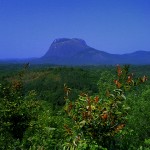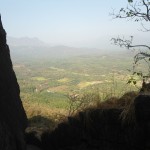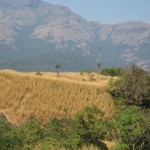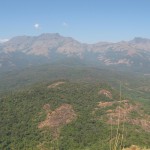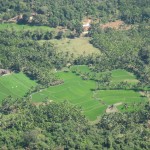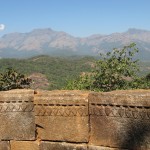Jamalabad Fort is an old hilltop located in Beltangadi Taluk, Dakshina Kannada District, Karnataka, India. It is located in the Kudremukh range of hills, 8 km north of Beltangadi town and 65 km from Mangalore city. The fort is 1700 ft above sea level and was formerly called Narasimha Ghada, which refers to the granite hill on which the fort is built. It is also referred locally as “Jamalagadda” or “Gadaikallu”.
History of Jamalabad Fort
The fort was built by Tipu Sultan in 1794 and named after his mother, Jamalabee. He decided to build a fort there, as he was impressed by the massive granitic rock which was suitable for the construction of an strong fort. The fort was built over the ruins of an older structure. The fort is inaccessible other than via a narrow path, with around 1876 steps to the fort that are cut out of the granite hill and lead all the way to the top. This would mean that a small but well-armed group could indefinitely block a much larger force from entering the fort. Inside the fort, there is only one tank to store water. Remains of a single cannon lie at the top. Nothing much of the fortifications remain but hints of the fort wall with parapets are visible. The fort was captured by the British in 1799 during the 4th Mysore war.
How to get there from Mangalore
From Mangalore the distance is about 65 km, government and private buses are available throughout the day, government buses are available from the Mangalore KSRTC bus stand. The government buses takes about 2 hrs because of the numerous stops along the way. If you plan to take your own transport or taxi then you should take NH 234.
Photo Gallery of Jamalabad Fort
Trek to Jamalabad Fort
Jamalabad is a trekking destination, with the climb up to the fort being classified as ‘medium difficulty level’ and the top of the structure offering good views of the surrounding landscape and the Kudremukh range. At the base of the hill is a forest check post where visitors have to pay a nominal entry fee. The entry fee are different for children and adults and citizens of India and Foreign tourists. Visitors should carry plenty of water (at least 3 liters per person) since there is no potable fresh water available on top. The nearest town with any communication and medical facilities is Beltangadi. Entry to the fort is restricted to between 6 AM to 6 PM and overnight stay at the fort is prohibited. This hillock fort has one room at the top. There is also an unmanned microwave repeater station on top of the hill. This is an easy trek, but requires a good deal of endurance as the steps are quit steep at most places. Take 3 liters of water per head and snacks to munch along the way, you can have breakfast at Belthangadi town near the bus stand there are plenty of hotels.
From Belthangadi town you can take a local bus to Manjodi this is approximately 9 km from the main bus stand. From Manjodi you’ll have to walk along a tar road toward the fort for about 3 km, along the way you will cross a river, you can freshen up here before and after the trek. Once you reach the fort you will realize that this is a national monument and is protected by the Archaeological Survey of India so please do not vandalize. The trek should take around 90 mins for a regular person, the steps are very steep for most of the climb. Trek here only during the drier months from December to May and trekking is not advisable during monsoon season (From June to October)
Latest Update
A trek to Jamalabad Fort will not tax your pockets anymore. The wildlife division, which had hiked the fee to Rs 200 for adults and Rs 100 for children April last year, has reduced it to Rs 20 and Rs 10 respectively – a 90% reduction. The fee for entry into Kudremukh National Park will be at Rs 200 and Rs 100. The entire trek should stay within a budget of Rs 500.
Map and Driving Directions to Jamalabad Fort
[mappress mapid=”17″]
Video Gallery of Jamalabad Fort
http://www.youtube.com/watch?v=dXc3PpsWDqI
